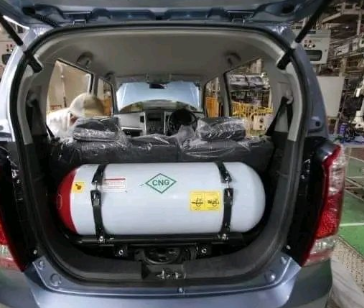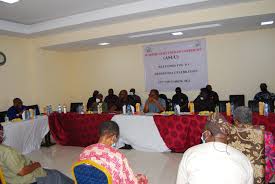A recent tragic incident in Edo State has raised significant concerns about the safety implications of transitioning from petrol-powered vehicles to Compressed Natural Gas (CNG).
This incident underscores the critical need to distinguish between CNG and Liquefied Petroleum Gas (LPG), both of which are commonly used in Nigeria.
Engineer Samuel Ushe, Chief of Operations at the National Metrology Institute, addressed these distinctions during a discussion on Channels TV’s Morning Brief on Monday.
The National Metrology Institute, a division of the Standards Organization of Nigeria (SON), plays a vital role in calibration and scientific metrology, serving as a benchmark for metrology standards in the country.
Key Differences Between CNG and LPG:
- Composition: CNG primarily consists of methane, making it a cleaner-burning fuel that emits fewer pollutants compared to traditional fossil fuels. In contrast, LPG is made up of propane and butane, which are byproducts of natural gas processing and oil refining.
- Cylinder Specifications: CNG is stored in high-pressure cylinders designed to withstand pressures of up to 300 bars, requiring more robust materials. These cylinders can range from 5 to 90 liters. Conversely, LPG is stored at a lower pressure (around 5-10 bars) and is typically used in lighter cylinders, often for household purposes like cooking.
- Energy Content: CNG has a lower energy density compared to LPG, meaning that vehicles need larger storage tanks or more frequent refueling to match the energy output of LPG. This higher efficiency makes LPG a popular choice for cooking and heating in many Nigerian homes.
ALSO READ : 24-Year-old student sentenced for trespass and theft in Jos
- Material Construction: CNG cylinders are constructed from thicker, heavier materials, such as steel or composites, with a minimum thickness of 12.7 millimeters. LPG cylinders, being lighter, usually consist of steel or aluminum, with a thickness of about 4.0 millimeters.
- Usage and Applications: CNG is primarily used in vehicles as an eco-friendly alternative to gasoline and diesel, and its promotion is part of Nigeria’s strategy to address rising fuel costs. In contrast, LPG is widely utilized in homes for cooking and heating, making it a staple in many households.
The discussion surrounding the differences between CNG and LPG emphasizes the importance of understanding their respective safety requirements and applications as Nigeria navigates its energy transition.


 Business6 days ago
Business6 days ago
 Crime7 days ago
Crime7 days ago
 Latest1 week ago
Latest1 week ago
 Business1 week ago
Business1 week ago
 Politics1 week ago
Politics1 week ago
 Latest3 days ago
Latest3 days ago
 Politics7 days ago
Politics7 days ago
 Education7 days ago
Education7 days ago












